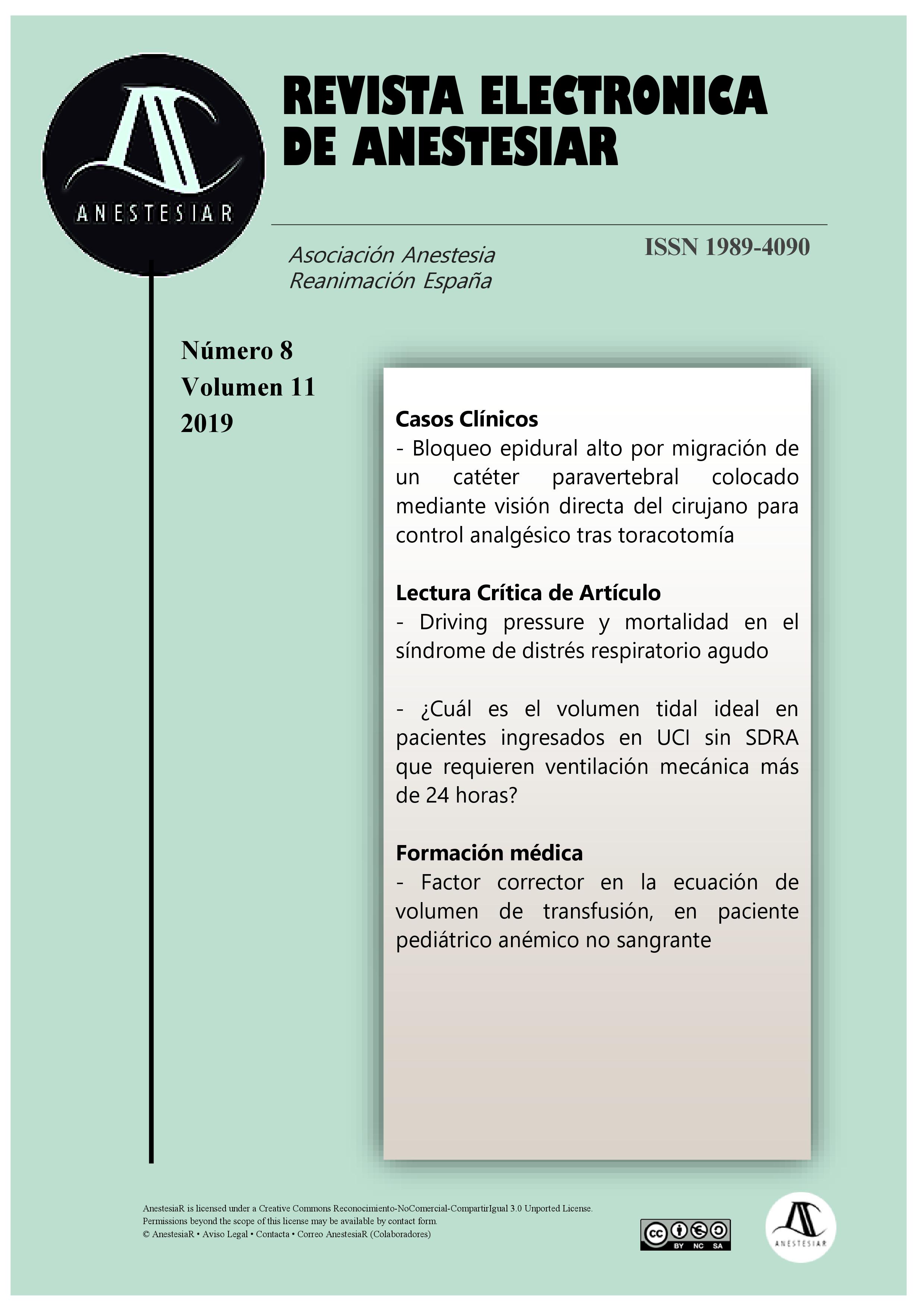High epidural block after migration of paravertebral catheter placed by surgeon’s direct vision for post-thoracotomy analgesia
DOI:
https://doi.org/10.30445/rear.v11i8.797Keywords:
Anesthesia, Epidural, Anesthesia, Regional, Pain Management, Postoperative Care, Postoperative complications, Thoracic SurgeryAbstract
The analgesic technique of choice for postoperative pain control after thoracic surgery remains a thoracic epidural analgesia. In the last 10 years, many studies have shown continuous paravertebral block as equally effective and even safer, with few cases of serious associated complications. We present the case of a 73-year-old female, ASA III, undergoing a left atypical pulmonary resection with intraoperative placement of a paravertebral catheter by surgeon’s direct vision for postoperative analgesia.
5 hours later she presented a high epidural block (T1 sensitive, T4 motor). Local anaesthetic infusion was stopped, and the epidural catheter’s tip location was confirmed by contrast radiological image. In our case, catheter’s migration questions the sense of greater safety of this technique and emphasizes the mandatory need of strict monitoring in any performed procedure.
References
- Raveglia, F., Rizzi, A., Leporati, A., Di Mauro, P., Cioffi, U., Baisi, A. Analgesia in patients undergoing thoracotomy: Epidural versus paravertebral technique. A randomized, double-blind, prospective study. J Thorac Cardiovasc Surg. 2014;147: 469-74.
- Garutti, I., Hervias, M., Barrio, J.M., Fortea, F., De la Torre, F. Subdural Spread of Local Anesthetic Agent following Thoracic Paravertebral Block and Cannulation. Anesthesiology. 2003; 98:1005–7.
- Frohm, R.M., Raw, R.M., Haider, N., Boezaart, A.P. Epidural Spread After Continuous Cervical Paravertebral Block: A Case Report. Reg Anesth Pain Med. 2006; 31(3): 279–281.
- Yoshida, T., Shimizu, H., Furutani, K., Baba, H. Unintentional epidural placement of a thoracic paravertebral catheter inserted using an ultrasound-guided technique: a case report. J Anesth. 2016; 30 (4): 727-730.
- Lucas, S.D., Higdon, T., Boezaart, A.P. Unintended Epidural Placement of a Thoracic Paravertebral Catheter in a Patient with Severe Chest Trauma. Pain Med. 2011; 12: 1284–1289.
- Kotzé, A., Scally, A., Howell, S. Efficacy and safety of different techniques of paravertebral block for analgesia after thoracotomy: a systematic review and metaregression. Br J Anaesth 2009; 103: 626–36.
- Karmakar, M.K., Kwok, W.H., Kew, J. Thoracic paravertebral block: radiological evidence of contralateral spread anterior to the vertebral bodies. Br J Anaesth. 2000; 84: 263-5.
- Luyet, C., Hermann, G., Ross, S., Vogt, A., Greif, R., Moriggl, B. et al. Ultrasound-guided thoracic paravertebral puncture and placement of catheters in human cadavers: where do catheters go?. Br J Anaesth. 2011; 106 (2): 246–54.
Downloads
Published
How to Cite
Issue
Section
License
Copyright (c) 2019 Revista Electrónica AnestesiaR

This work is licensed under a Creative Commons Attribution-ShareAlike 4.0 International License.
 Envío y derechos de autor
Envío y derechos de autor


 Revista Electrónica AnestesiaR by
Revista Electrónica AnestesiaR by 